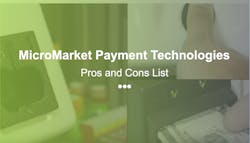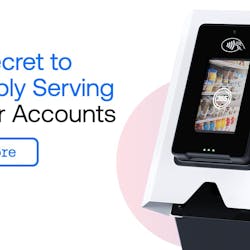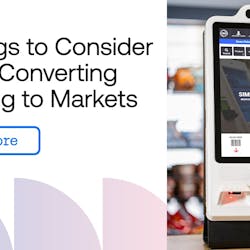When it comes to which payment solution to offer in your MicroMarket, is variety the spice of life? The short answer is: yes! 365 Retail Markets’ CEO, Joe Hessling says, “Your goal is to provide the right payment method, for the right consumer, at the right time. If you don’t, you run the risk of losing that customer’s business forever.” He recommends talking to the location to tailor the payment methods to best fit the customer-base.
There are hundreds of different payment methods and technologies available today. To help you provide the best service for your customers, we’ve compiled a list of the popular payment methods and the pros and cons of each.
Cash and Coins
As Vending and MicroMarket Operators, you are all too familiar with the crinkle of paper and the jingle of change. But is cash really the best option for your MicroMarket? The answer is, it’s complicated. By accepting cash and coins, you need a machine that can dispense change. You also have to keep count and replace the cash regularly.
Features:
• Paper bills and coins
Pros:
• Customers are familiar and comfortable with cash and coins, which may make market adoption easier
Cons:
•Operators have to manage cash payments and refunds
• Kiosks need to be equipped with bill validators and bill recyclers
An alternative to this would be to accept cash at the kiosk only to fund stored value accounts. MicroMarket kiosks such as 365’s Gen3c has this capability.
Stored Value Accounts
What are stored value accounts? Glad you asked. A stored value account is a prepaid account that consumers can fund either online or at the kiosk. They can then access those funds via a market card, employee badge, login ID and PIN or through biometrics like a thumb or fingerprint.
What makes stored value accounts great?
Research from a Bachtelle and Associates1 survey says that market cards account for:
• 65.9% of revenue
• 68.7% of products purchased
Another way to leverage stored value accounts is by using payroll deduct. Payroll deduct is a Human Resource-based incentive where funds are pulled from an employee’s paycheck as they use their market account.
Features:
• Prepaid account where the funds can be added online or at the kiosk
Pros
• Reduces or eliminates the use of cash
• Contributes 66% of revenue
• Great tool to implement customer loyalty programs
• Allows for customer purchase history data
• Fewer merchant fees when compared to credit and debit transactions
Cons
• Funds loaded into a stored value account cannot be counted as revenue until they are actually used. Beware not to count these funds as revenue as it could lead to accounting issues. NAMA recommends consulting an attorney or accountant to “determine how local and state laws treat prepaid balance accounts (NAMA’s Micro Market Manual).”
NFC and Mobile Payments
NFC and mobile payments are gaining in popularity in the retail space, so implementing the technology into your MicroMarkets makes sense. NFC or near-field communication technology “allows two devices placed within a few centimeters of each other to exchange data” (Cnet.com), such as a smartphone. With mobile payments expected to increase by 128% in 2017, according to eMarketer, the time is ripe to begin implementing a mobile payment solution in your MicroMarket. There are many mobile payment platforms available: Apple Pay, Android Pay, Samsung Pay, Visa Checkout, MasterCard Contactless, etc.
NFC-based payments offer an additional layer of security for both Operators and consumers. Instead of transferring the consumer’s credit card number to the merchant, a unique, one-time-use security code called a token is generated for the transaction.
Features:
• A secure payment method via mobile devices including Android and iPhones.
Pros:
• Growing payment method.
• Offers more security than credit and debit card purchases.
Cons:
• Although adoption of mobile payment technology is increasing, it is still new and may take time to become a commonplace payment method.
Credit and Debit Cards
Credit and debit cards remain the most popular form of payment in MicroMarkets with 49% of transactions being swipe-based (Automatic Merchandiser). However there are Interchange and Merchant fees that are associated with accepting swipe payments. Be sure to look over the fee breakdowns carefully.
Features:
• Plastic card with a magnetic stripe and as of 2015, the EMV chip.
Pros:
• Responsible for 49% of MicroMarket transactions
Cons:
• Fees, fees, fees!





